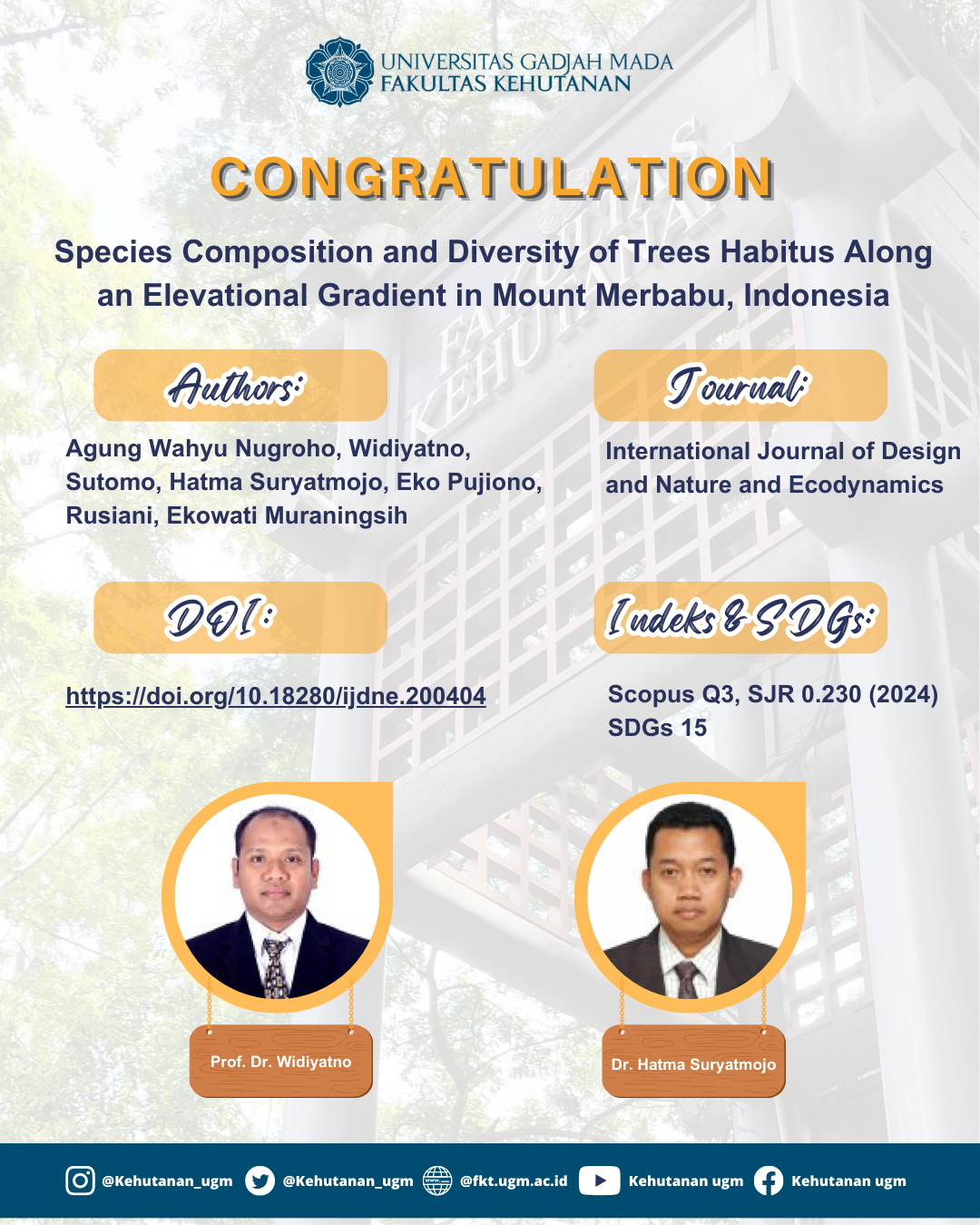
Abstract
This study aimed to identify the species composition and diversity of tree habitus in Mount Merbabu. A purposive, systematic sample using a survey technique based on elevation gradient, i.e., A (1,500-2,000 m asl), B (2,000-2,500 m asl), and C (>2,500 m asl), was employed in this study. Fifty-nine sample plots, each measuring 20 m × 20 m, were established along five hiking tracks. The results showed that the tree species composition at elevation gradients A, B, and C comprised 15 species in 14 families, 20 species in 18 families, and 6 species in 5 families, respectively. The families Actinidiaceae, Euphorbiaceae, Fabaceae, and Rubiaceae each contained two tree species. Other families, including Araliaceae, Cannabaceae, Cupressaceae, Cycadaceae, Ericaceae, Fagaceae, Juglandaceae, Lauraceae, Meliaceae, Moraceae, Pinaceae, Pittosporaceae, Podocarpaceae, Proteaceae, Sapindaceae, and Theaceae, were represented by one species each. The dominant families in zones A, B, and C were Actinidiaceae (13%), Euphorbiaceae and Fabaceae (10%), and Fabaceae (13%). Species diversity (Species richness, Margalef, Shannon’s diversity index, Pielou’s evenness) generally decreases with increasing elevation. The tree species in elevational A had the highest Shannon diversity index (H’) of 0.84, followed by elevations B and C with 0.63 and 0.25, respectively. Elevation, air temperature, and air humidity are environmental factors with the highest correlation to species composition. The reduction in species diversity with elevation may be attributed to harsher climatic conditions, lower soil fertility, and increased environmental stress at higher altitudes. This study contributes to closing knowledge gaps, clarifies observed forest dynamics, and provides valuable information for restoration strategies.
SDGs:
SDG 15:Life on Land
Link Dokumen:
Download
